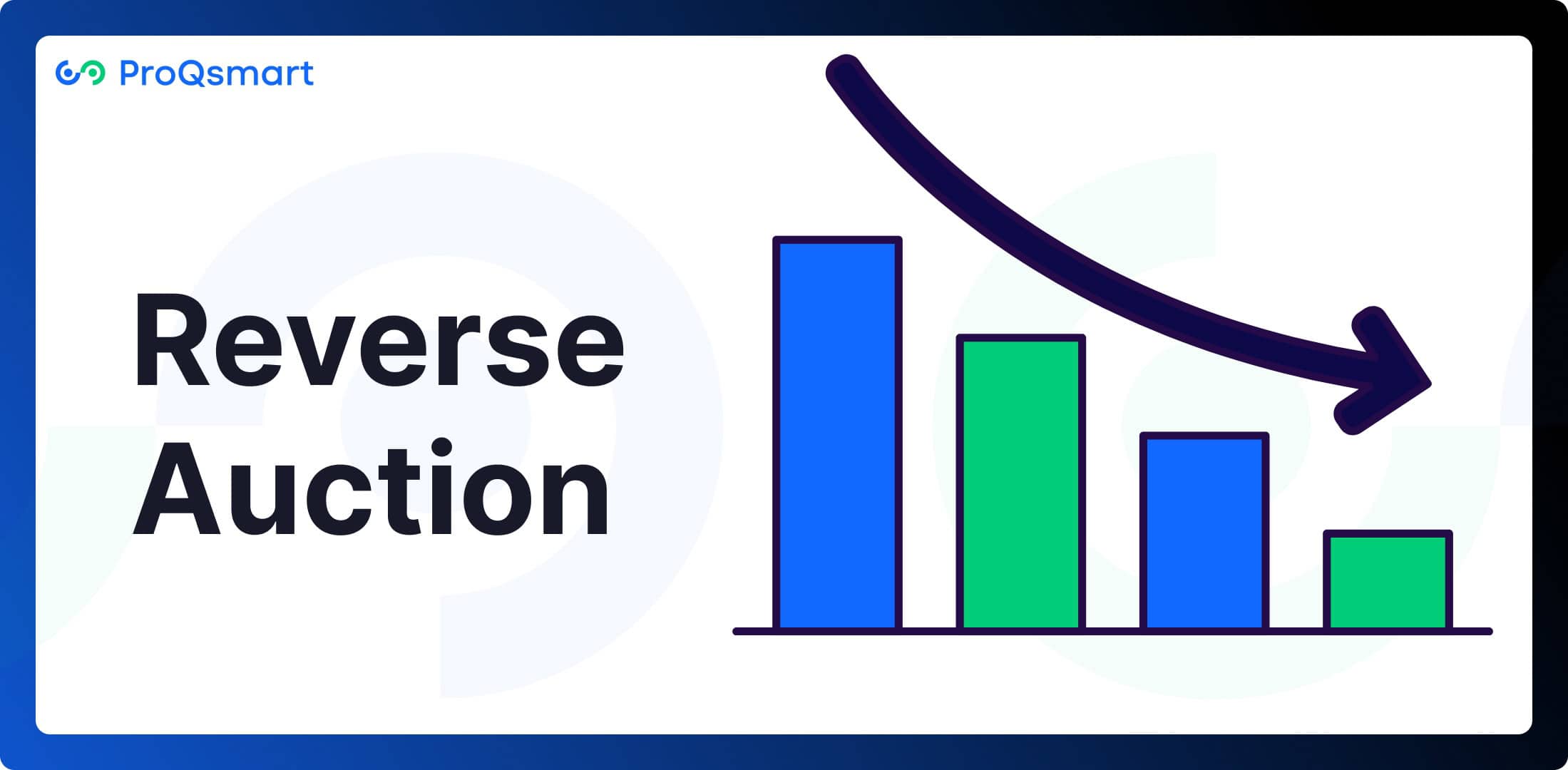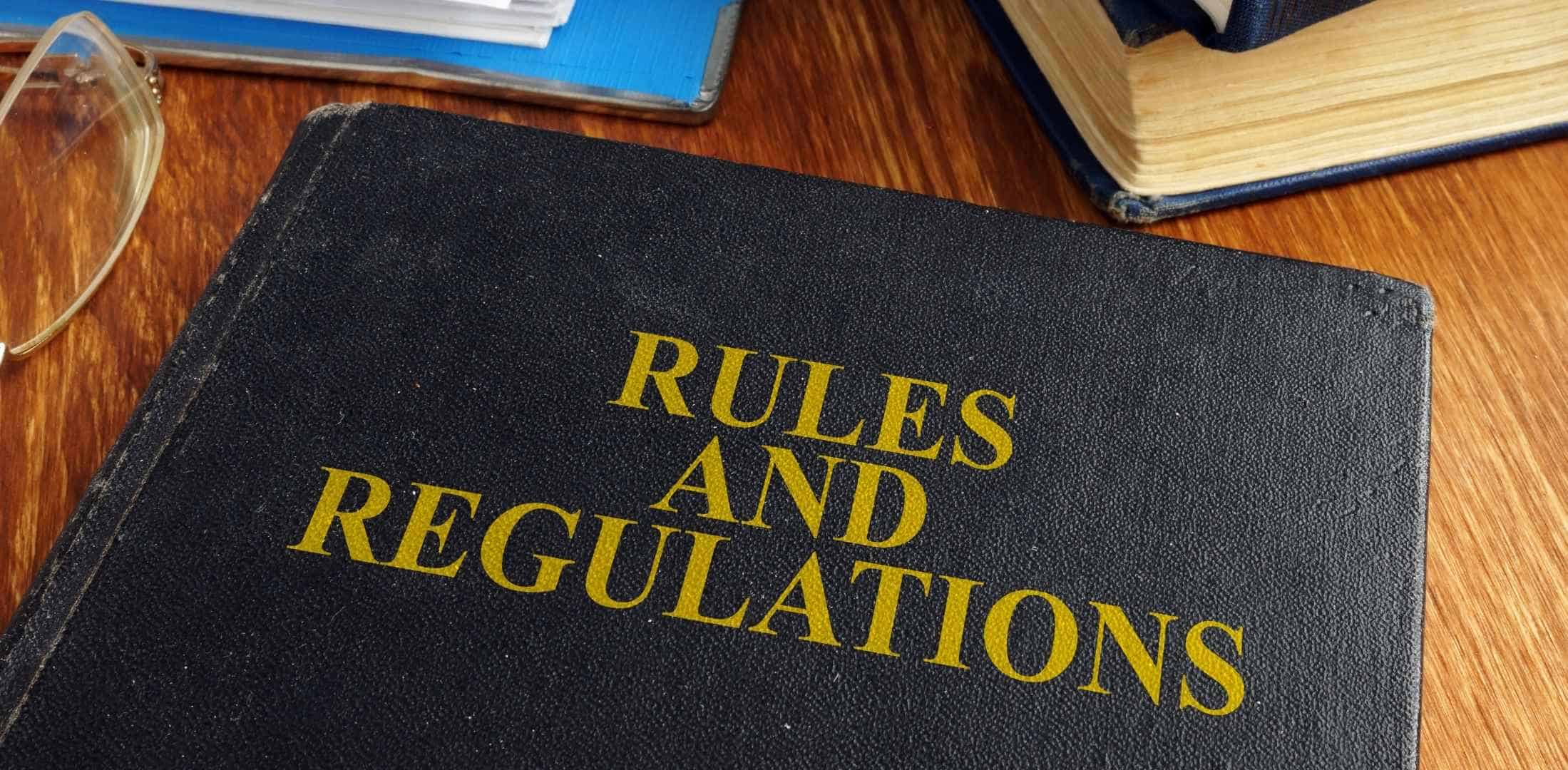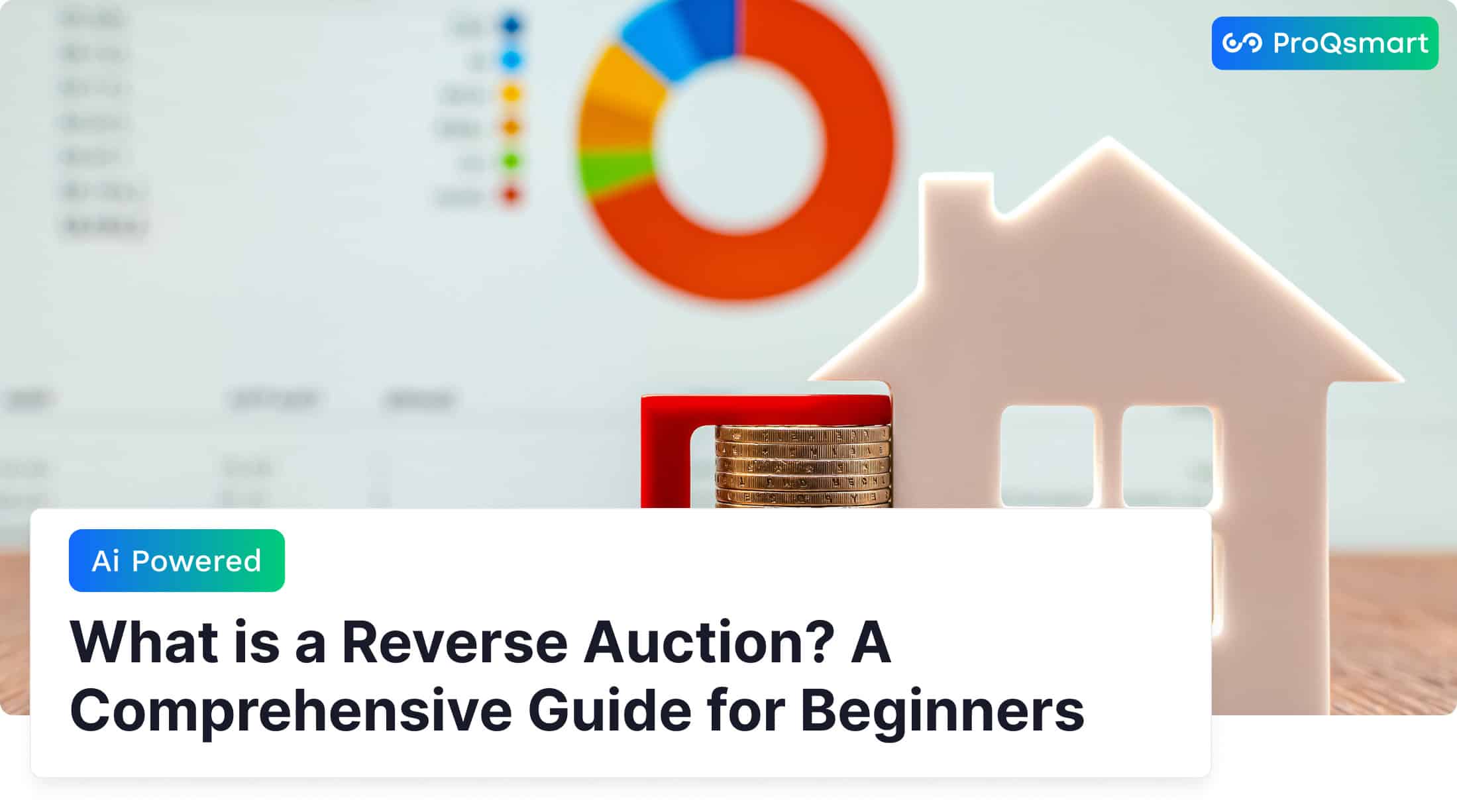Ever wonder how to get the best deals in B2B SaaS procurement? Reverse auctions could be your golden ticket. Reverse auctions revolutionize the procurement process. They enable sellers to bid each other up with their minimum price. This technique isn’t just a win from a cost perspective — it also takes transparency and efficiency to the next level. Step inside the reverse auctions transforming construction, manufacturing, and supply chains. Let’s dig into these fundamentals side by side and find out how you can benefit from reverse auctions in procurement.
Prepare to discover how this powerhouse can transform your business. It’s not just about the money you save — it’s about getting that competitive advantage. You’re ready to learn more, huh? Let’s go for it.
Key Takeaways
- Reverse auctions are a form of competitive bidding. In this setup, sellers compete to offer the lowest price for goods or services, often driving down procurement costs.
- There are different types of reverse auctions, including the rank-based and Japanese auctions. Each type offers its own unique strategies for reaching out to suppliers and scoring the best price.
- Reverse auctions simplify the procurement process and allow everyone to be more transparent. They also result in substantial cost savings, which makes them a valuable tool for organizations looking to increase productivity.
- Reverse auctions are helpful, but not without their complications. Suppliers get frustrated, and you run the risk of focusing exclusively on price and losing sight of quality and value.
- You need to know the exact process to follow step by step in order to hold effective reverse auctions. Get a clear understanding of your goals, and Assess the bids.
- Comparing forward and reverse auctions reveals strategic differences. This insight allows organizations to choose which approach is most appropriate given varying market conditions.
What is a Reverse Auction?

Definition of Reverse Auction
A reverse auction is not your typical auction process — it’s the complete opposite. Instead of buyers competing to offer the highest price, sellers engage in a reverse auction activity to provide the lowest. Imagine you’re the buyer — you’re calling the shots, crafting the request for goods or services. In this procurement scenario, it’s all about slashing costs. Sellers line up to win your favor, underbidding one another. This reverse auction procedure works effectively to ignite competition among suppliers, resulting in a lower bid price.
Just like in traditional auctions, think of reverse bidding as the engine here, where you adjust your offer until you discover that sweet spot. It’s an auction in reverse — accelerating towards savings. This trend significantly spans various disciplines, evident in government procurement, private companies, and even on online auction platforms, showcasing its versatility and effectiveness in modern procurement strategies.
How Reverse Auctions Work
Picture this: you’re the buyer, laying out your needs like a shopping list. Then sellers dive in, each putting in an offer with shrinking bids over time through the reverse auction process. The game is certainly about transparency all of the time. Thanks to bid visibility, everyone gets to see the current bid and how many are in the race. This openness keeps the playing field level and fair. The tech side of things is important, too. With this reverse auction software, it’s all smooth sailing; all the bids are handled effortlessly, making the online auction process efficient and effective. Whether online or offline, these auctions have evolved, with online auction platforms boosting speed and reach.
Here’s how you’d typically run a reverse auction:
While reverse auctions can chop up to 20% off costs, they’re not a magic wand. Use them, but judiciously, and in a manner that meets the specific procurement strategies for each procurement assignment. Remember, sellers need to identify their bottom price, meaning they’re willing to sell for that amount. This is about more than just numbers — it’s about better supplier relationships, reduced costs, and accelerating efficiency. Like any tool, it’s all about knowing when and how to use it.
- Buyers kick things off by establishing a starting price. This is your first move.
- Send out invites to potential sellers, drawing them into the auction.
- Sellers start submitting their bids, each trying to undercut the last.
- Keep an eye on the bids as they flow in; transparency means everyone knows where they stand.
- Once the auction ends, the lowest bid takes home the prize—a contract.
Incorporating a reverse auction example into your procurement scenario can lead to significant savings. However, it’s essential to understand that this method is not suitable for every situation. Strategic sourcing and effective procurement processes are crucial for maximizing the benefits of reverse auctions. By leveraging the right auction platform such as ProQsmart and understanding the auction structure, buyers can achieve optimal results while fostering healthy competition among sellers.
Types of Reverse Auctions

Ranked Auction Overview
Ranked auctions are the popularity contests of procurement auctions. Picture this: bids evaluated not just on price, but on a whole package deal through a reverse auction process. The lowest bid tends to win, but here’s the catch – quality, service, and other metrics can skew the scales. Imagine you’re buying laptops for an office. Supplier A takes a bottom-line price, and Supplier B adds in more warranties and support, showcasing a reverse auction example. Bidding may happen in several different rounds, like polishing a gem into a precious stone. The secret sauce? Clear auction parameters in the reverse auction procedure. Without them, it’s like playing soccer without goal posts.
Japanese Auction
Japanese auctions are the thrillers of the auction world, often contrasted with the reverse auction process, which operates differently. They start off at a nice, even pace but quickly bring the heat as prices rise until only one bidder remains. It’s like a bidding shootout, which can cause bidders to break a serious sweat. Sellers can leverage this to their advantage, plotting when to raise the stakes. This competitive procurement method isn’t as common in reverse auctions, where the dynamics of timing and pricing require a different strategy, making it less appealing for some participants.
Dutch Auction
Dutch auctions are the fast and furious of the auction formats, particularly in the context of procurement auctions. They start at a ridiculously high price and drop until someone shouts, “Deal!” This unique auction format is all about speed and decisiveness, requiring buyers to move quickly and conduct thorough research to secure the best bid prices. Sellers benefit significantly because if buyers don’t blink, profits can skyrocket. In fast-paced procurement settings, understanding how the reverse auction process works can be crucial. Imagine purchasing stock for a flash sale — you want to leverage effective procurement strategies without ending up like a deer in headlights, do you?
Open Outcry Auction
Open outcry auctions are the old-school noisy marketplaces. In this auction process, sellers shout their bids, creating a sizzle of instant competition. It’s live, it’s dynamic, and it’s all about real-time interaction, much like a reverse auction process where bidders compete to offer the lowest prices. Think of it like speed-dating for procurement — rushed, yes, but revealing. Sellers hash out what they need and how much to bid on the spot, making the management of such dynamic environments a wild ride, akin to navigating a competitive procurement method.
Applications in Procurement
Sourcing Parts Effectively
Reverse auctions are your ace in the hole, especially when considering their unique auction format that enhances procurement processes. They assist you in determining the optimal approach to acquiring parts and components, maintaining a seamless operation. You’ve got to get those specs right.
Why? Because clear specs attract the right suppliers who can meet your needs precisely. It’s all about getting the right kind of crowd. Then you throw in reverse auction platforms, and sourcing tasks become a piece of cake. Just post what you require and create the environment for offers. See suppliers bid for your business through the reverse auction process — often resulting in better deals and more efficient procurement! By aggregating bids, it’s possible to save big bucks. So, if you’re not already on these platforms, it’s time to consider hopping on the bandwagon.
Aggregating Parts for Discounts
Here’s where things get exciting: combining multiple requests into one big auction process. Think of it as a group buy on steroids. By grouping parts, especially those low-spend ones, in one whole package, businesses benefit from volume discounts, leveraging competitive procurement methods. Suppliers typically love it because they get to sell more at one time. Here’s the catch: supplier collaboration is key. When suppliers band together, they tend to get better pricing through reverse auction strategies that negotiate better terms for both sides. This is where procurement teams come in, utilizing procurement auction tools to set accurate bids and group parts properly. In doing so, they ensure you’re targeting suppliers with the right machines and capacities, optimizing the reverse auction process and enhancing overall procurement efficiency.
Finding Alternative Suppliers
Diversity isn’t just a buzzword; it’s a winning strategy in procurement activities like the reverse auction process. In reverse auctions, those sellers encourage buyers like you to shop around, leading to a competitive procurement method that introduces new vendors and service providers who provide valuable insights and skills. It’s akin to opening up a treasure chest of opportunities. Remember that assessing supplier capabilities and performance is key; you don’t want to jump in with a supplier who can’t deliver. By utilizing reliable auction platforms, you can easily unearth these alternative sourcing opportunities through effective bidding processes. However, there’s a flip side: if suppliers are repeatedly outbid, even if they’re the best fit, they might lose business, necessitating a balanced approach to maintain relationships across the supply chain.
Benefits of Reverse Auctions

1. Reduce Purchase Costs
When we’re discussing cutting costs, the reverse auction process is truly transformative. Picture a crowded marketplace where multiple sellers are vying to offer you the best deal. This reverse auction activity empowers businesses to secure the lowest possible price by fostering a competitive environment where suppliers compete against each other. In fact, this competition can reduce procurement costs by an average of 20%, translating to savings of up to $100,000 each year for parts! That’s significant money you can reinvest elsewhere in your business. For example, in the electronics industry, where components can be costly, the reverse auction procedure dramatically reduces costs, helping you stay within budget while allowing you to save for emergencies.
The long-term financial benefits of utilizing reverse auction strategies are substantial. By incorporating these procurement auctions into their acquisition routine, companies can effectively manage their budget and enhance their procurement strategies. If you’re looking to save money, reverse auctions are an excellent method to tighten your budget and maximize savings. Embracing this innovative approach can lead to smarter purchasing decisions and improved financial health for your organization.
2. Simplify Negotiations
Sometimes negotiating can feel like a game of tennis — round after round. The reverse auction process simplifies things significantly. By streamlining the negotiation phase, reverse auctions eliminate protracted conversations and lengthy negotiations. Clear bidding enables buyers to view competitive bids from multiple sellers simultaneously. This method saves time on haggling and allows buyers to efficiently close contracts based on the auction results.
Now, imagine having ten suppliers all competing for your attention at once. It’s akin to having a dozen options at your fingertips without the fuss of ordinary auctions. This reverse auction activity enhances efficiency and facilitates quicker decision-making. If you’re looking to save time and reduce procurement costs, the reverse auction procedure might be the ideal solution, providing a convenient way to bypass the hassles of traditional negotiation processes.
3. Improve Budget Planning
Ever tried looking into the crystal ball? The reverse auction process makes it a little easier for budgeting. With predictable pricing from competitive bids, you can plan your spend with confidence. By locking in prices early through the reverse auction procedure, you won’t face any unpleasant surprises when the bill comes due.
Reverse auctions also aid in budgeting by eliminating unexpected additional costs. For businesses, incorporating reverse auction results into financial planning provides a distinct advantage. It’s akin to a crystal ball that reveals future expenditures, allowing for more precise budgeting and enabling you to allocate funds where they matter most in your procurement strategies.
Challenges with Reverse Auctions
Potential Drawbacks
Reverse auctions can be a minefield, particularly due to the potential for bid manipulation. This issue arises when bidders toy with the figures, making it challenging to trust the numbers presented. For example, a supplier may submit a low bid during the reverse auction process, only to increase prices later through add-ons. Such practices not only compromise the integrity of the auction but also highlight the importance of having checks in place to identify these tactics early in the procurement auction.
Next, let’s discuss quality in the context of procurement strategies. If you concentrate exclusively on the lowest bid, you risk lowering your standards and might end up with a product or service that doesn’t meet your expectations. While a low bid may seem attractive, it is crucial to implement a system that ensures quality remains a priority throughout the bidding process, particularly in competitive procurement scenarios.
Another potential pitfall is the strain on supplier relationships that can arise from aggressive bidding in reverse auctions. Suppliers may feel pressured to cut their prices unsustainably, which can fray these important relationships. To mitigate these risks, it is essential to consider the auction format carefully and adopt procurement practices that foster positive long-term relationships with suppliers.
Common Difficulties
When you engage in a reverse auction process, having clear rules is essential. Vague rules can confuse participants, leaving them unsure of how to navigate the auction platform. To prevent misunderstandings, ensure that everyone comprehends the auction procedures before the bidding commences.
Managing multiple bids can be challenging, especially if you’re not prepared to handle the bidding activity effectively. One lesson drawn from EmpoweringCPO’s success stories is that being organized can significantly expedite the reverse auction process. This organization is vital in maintaining a smooth flow during competitive procurement.
Setting realistic expectations is crucial for all bidders involved. They need to know what they’re competing for and understand the auction structure. Without clear expectations, disappointment may arise from the auction results. Transparency should always be prioritized in any procurement auction scenario.
Lastly, proactive communication is a game-changer. Having an open line with suppliers also alleviates many concerns and confusion. It’s like having a powwow with a friend to smooth out any wrinkles before they start to become issues.
Step-by-Step Guide to Reverse Auctions
Pre-Bidding Preparation

You gotta have a solid game plan when engaging in the reverse auction process. Before you jump into a reverse auction, it is imperative you gather all the nitty-gritty details. You also need the exact specifications and requirements, which can be likened to a shopping list for bidders. Being specific will attract higher quality bids, much like getting the stage ready for a big movie with the right script. Understanding how the reverse auction works, including the auction structure and bidding processes, is essential for success.
Don’t just let anyone in; prequalifying your suppliers is crucial in this procurement scenario. It’s akin to vetting a band before they open at your concert, ensuring they can deliver a stellar performance. By having suppliers meet certain standards, you guarantee quality participation. Establishing clear auction rules and guidelines is vital for a smooth and fair process. After all, you wouldn’t play a game without knowing the rules, so set these up front to ensure effective bidders can navigate the auction successfully.
Setting Auction Rules

Defining specific auction rules is akin to establishing healthy boundaries in a relationship — it keeps the auction process drama-free. Clear guidelines are essential to facilitate the bidding process, ensuring that all participants understand how the reverse auction works. This clarity helps to avoid disputes and maintains a cordial atmosphere among competitors.
Before the auction commences, communicate these rules to participants, similar to sending a memo before an important meeting. Everyone must be aligned with the auction structure. Additionally, be adaptable enough to modify the rules for various procurement auctions and scenarios. Flexibility is vital, much like adjusting your strategy in a video game to achieve victory.
Conducting the Auction

When it’s showtime, managing the reverse auction process in real-time is essential. Imagine you’re a conductor of an orchestra; you must monitor bids and maintain transparency, akin to keeping the music in harmony. Everyone should see what’s happening to preserve trust among participants in the auction process.
It heavily relies on technology, serving as your digital assistant that ensures everything runs smoothly. Actively engage with your registrants, addressing their questions and concerns. Treat it like a live Q&A at a concert—keeping the crowd happy is crucial for a successful auction.
Making Award Decisions

When it comes to picking winners in the reverse auction process, it’s not solely about price. While bid prices are important, understanding supplier capabilities is crucial. Selecting the right partner in a competitive marketplace is akin to finding a dance partner who can keep up with you, rather than just someone who looks good. Striking a balance between price and quality is essential for achieving the best outcome in procurement auctions.
Documenting the decision-making process is vital, serving as your safety net to ensure everything is above board. Transparency in communicating award decisions during the auction process is equally important. It’s like announcing the winner of a talent show—everyone should understand the rationale behind your selection.
Comparing Forward and Reverse Auctions
Fundamental Differences Between Forward and Reverse Auctions
In a forward auction, like those held at prestigious venues such as Sotheby’s and Christie’s, bidders engage in an exciting auction process that drives prices upward. Picture a room filled with potential buyers, each attempting to outbid one another for a rare piece of art or an antique vase. Here, multiple buyers are competing fiercely, each offering slightly higher bid prices, creating an exhilarating atmosphere that ultimately benefits the seller with a significant payoff. This traditional auction format showcases the dynamic nature of bidding activity where the highest bid wins.
Now, let’s explore the reverse auction process, which flips this scenario on its head. Imagine a business needing a bulk shipment of office supplies. Instead of prices rising, they spiral downward as sellers compete to offer the lowest bid price to secure a contract. In this reverse auction activity, suppliers are motivated to undercut each other, creating a competitive marketplace that benefits the buyer with substantial savings. This unique auction format exemplifies how reverse auction bidding works, allowing businesses to leverage procurement strategies effectively for cost management.
Focus on Price Dynamics
Here’s the kicker: forward auctions are all about the price hike. Sellers want that best buck, so they have buyers raise their bids. It’s like a classic competition, where the last highest bidder wins. In reverse auction processes, however, we’re talking about the opposite. It’s a little bit like a “who can go lower” type of thing. Sellers bid against one another, undercutting each other to capture the business from that one buyer, showcasing a unique auction format that benefits procurement auctions.
This shift changes the entire game for buyers and sellers. In forward auctions, buyers can end up paying a premium, particularly for high-demand items. Conversely, in reverse auction scenarios, buyers often come away with savings, sometimes as much as 20% or more. This is gold for businesses looking to save money, especially during a challenging economy such as a pandemic, making reverse auction strategies a vital procurement method.
Implications for Buyers and Sellers
When discussing the auction process, consider forward auctions where sellers present unique items to a crowd of eager buyers, driving prices upwards. This format is particularly advantageous for high-value sales. Conversely, the reverse auction process is a strategic procurement method that benefits buyers seeking to optimize their budgets. In a reverse auction, often used by corporations and government procurement teams, sellers must be agile and competitive in their pricing to secure contracts. This reverse auction bidding environment requires sellers to remain vigilant about costs, as they aim to place bids that undercut their competitors to win valuable contracts.
In the context of procurement auctions, the reverse auction concept allows organizations to acquire goods and services at lower prices by fostering competition among multiple sellers. Through this online auction process, sellers are incentivized to adjust their bid prices downward, creating a dynamic marketplace that ultimately benefits the buying organization. By leveraging effective reverse auction strategies, companies can streamline their procurement processes, ensuring they achieve the best bid while navigating the complexities of contract negotiations and supplier competition.
Assessing Auction Formats for Business Goals
How do you make the decision on which auction to bid? It really depends on what your goals are. If you’re a business that sells unique, high-value items, forward auctions might be your jam. However, if you’re focused on reducing procurement costs, then the reverse auction process is your friend. These procurement auctions provide a competitive advantage, especially when you have to make every single dollar work for you through effective bidding strategies.
- Ideal for unique, high-value items; sellers benefit.
- Reverse Auctions: Perfect for procurement; buyers enjoy cost savings.
Tips for Successful Auctions
Best Practices for Bidders
In a reverse auction process, bidders must be at the top of their game to secure a win. Understanding the buyer’s requirements is crucial; you can’t just guess. Delve into those specifications as if preparing for a final exam. Knowing what they need inside out puts you ahead in the reverse auction activity. For example, if a buyer seeks sustainable materials, highlighting your eco-friendly offerings can set you apart in the competitive marketplace.
When it comes to pricing, achieving a balance is key. While keeping your bid prices competitive is important, never compromise on quality. The goal is to find that sweet spot where price meets quality. For instance, offering a slightly higher bid price for a longer-lasting product might be more appealing. Additionally, cultivating strong relationships with buyers is essential; understanding their business makes you a reliable partner. This rapport ensures they remember you for future procurement scenarios. After submitting a bid, following up can provide valuable feedback about what the client appreciated or disliked, laying the groundwork for successful bidding strategies in upcoming reverse auctions.
Strategies for Buyers
If you’re on the buying side, you’ve got some strategies to work with too, especially when considering the reverse auction process. You begin with preparation (that’s the first of seven steps). Knowing exactly what you need before sending out those invites is crucial. Clear communication to suppliers is worth its weight in gold. By simply and clearly laying out your needs, suppliers know just what to shoot for. Give at least a week between sending out the invites and the auction date. This timeframe allows everyone enough time to prepare for the auction activity.
Evaluating bids isn’t just about picking the cheapest; it’s essential to consider quality as well. Think of it like a dinner recipe; it’s not just the basic ingredients, but how they’re put together. You want a solution that pays for itself, delivering positive ROI from day one. In the work they do, a well-run reverse auction can save months of negotiating and boil that down to minutes, which is like saving a ton of time and money right there! This reverse auction procedure streamlines the procurement process, making it more efficient.
Don’t disappear after the auction. Continue to stay in front of vendors to create a competitive advantage for future auctions. Healthy competition and collaboration will help you score the best deals. Continued engagement with suppliers can lead to anywhere from 2-10% lower costs. That’s especially true if you’re using a reliable auction platform to track your spending. Remember, if you’re utilizing a reverse auction format, choose wisely based on your needs, as each format has its strengths and can significantly impact your procurement strategies.
Final Remarks
Reverse auctions revolutionize the procurement process by allowing suppliers to compete on price, leading to better deals and faster results. While challenges such as bid management and technical issues may arise, a solid plan can help you navigate these hurdles effectively. By following best practices and leveraging the right tools, you can master this process and optimize your procurement strategy.
Discover how reverse auctions can enhance your procurement effectiveness. Book a demo with ProQsmart today to explore how our platform can empower you to streamline your procurement activities and achieve significant cost savings. Let’s transform your buying process together!
FAQs
What is a Reverse Auction?
A reverse auction process is a bidding event where multiple sellers compete to offer the lowest bid prices for goods or services, benefiting buyers through competitive pricing.




